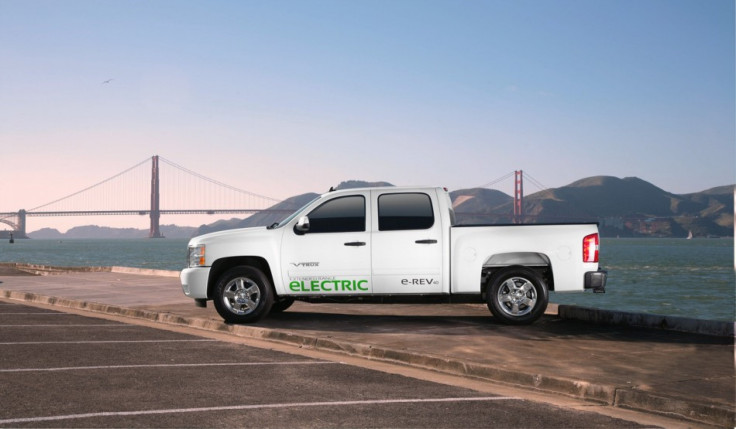Bob Lutz at the Detroit Auto Show 2012: The Auto Industry Titan on the Electric Vehicle, the U.S. Auto Industry and More

DETROIT -- Five years ago, Bob Lutz introduced the Chevrolet Volt to the world in Detroit, a car that went on to serve as the United States' first foray into the electric-car demographic. On Tuesday, three years later, he stood in front of curious onlookers at the 2012 North American International Auto Show in Detroit and introduced a line of extended-range electric fleet vehicles produced by Via Motors.
Lutz's career has spanned much longer than this, of course. His work at Via Motors, for which he serves as a member of the board of directors, actually comes as he is retired. But his career before this has spanned parts of six decades in all three major U.S. automakers -- Chrysler, Ford and General Motors. He's seen the auto industry at its best and worst, and even helped resurrect Chrysler back to profitability after its first bailout from the U.S. government in 1979.
Now, he's on the board of Via Motors, a company that produces electric versions of GM trucks, vans and SUVs. Via Motors vehicles have a range between 40 to 50 miles before its gas engine kicks in, if needed. For now, it's marketing to fleets, but consumers could see the vehicles by 2013.
The International Business Times spoke with Lutz on Tuesday about Via Motors' plans, the state of the U.S. auto industry and more.
International Business Times: Can you talk about your relationship with Via Motors and some of the new features of their electric-range trucks, vans and SUVs?
Bob Lutz: I'm a board member of Via, so I'm not a member of active management. But I am very excited about the company, because this is the first time that anybody has done extended-range electric vehicles on full-size pickup trucks, vans and sport utilities.
It makes sense for a couple of reasons. One: These are the size of vehicles that America really likes. The U.S. industry sells millions of pickups a year. Secondly, if you're going to save fuel by electrification technology, it makes the most sense to electrify the vehicles that use the most fuel, which again are your full-size pickups and sport utilities.
Thirdly, the reason I think these things are really going to be popular is that each one of these vehicles is going to be a mobile-generating set. So carpenters, plumbers, tile-layers, loggers -- anybody who needs electrical power at the job site, all they have to do is drive their electrical pickup to the job site and plug right in. That's of enormous value.
There's a lot of interest from public-utility fleets and large corporate fleets like Coca-Cola and so forth. I think this concept is going to be very successful.
IBT: You've said before that electric vehicles are the way of the future in the auto industry. When can you see vehicles like these being marketed to consumers?
BL: Well, people are going to have to pay a premium. There will be private people who will want a Via version of a Cadillac Escalade, because they like to own a big sport utility but at the same time, they want to appear responsible. We'll sell some of those.
And I think a lot of private people who go on vacation trips, camping trips, hunting trips and so forth will want a Via pickup or sport utility as privately owned vehicle. But that's not the market Via is going after initially. I will tell you, Via can live for years off the fleet demand.
IBT: How did this compare to introducing the Chevy Volt?
BL: It's interesting. When we did the Volt, nobody believed it in 2007. I think about it, and I hate to say it, but I think this makes even more sense than the Chevy Volt. Because with the Chevy Volt, we were doing a small electric vehicle based on a vehicle that gets 40 miles per gallon anyway. Here, we're going electric with vehicles that get 14 or 15 miles per gallon. The saving is much greater.
The other thing with the Volt is that you have to convince Americans to get into smaller vehicles, which is gradually happening anyway. But if you look at the average American and the mainstream American, their real heart's desire is a big pickup truck or sports utility. One of the reasons I'm excited about this is that this ensures the future of the big sport utilities and pickup trucks. Otherwise, with the new mandates for fuel economy, they were going to go away.
IBT: As someone with a lot of experience in the U.S. auto industry, where do you see it trending in the next year?
BL: I'm very optimistic about the short- and medium-term of the American auto industry. I think Chrysler, Ford and GM, all three have their acts together, doing the best products possibly of their history.
At the same time, we're sort of witnessing kind of a slowdown by some of the big Japanese producers. Now, you go into a show and you look at medium-size cars -- you look at the new Chevy Malibu and the new Ford Fusion. And then you go over and pull open the doors on new Japanese medium-size cars. And who's got the best interiors? The American cars now have by far the most beautiful interior. Ten years ago it was exactly the opposite. So I'm very optimistic about the future of Detroit.
© Copyright IBTimes 2024. All rights reserved.











